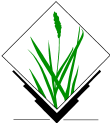Changes between Version 8 and Version 9 of GSoC/2016/Additional_segmentation_algorithms/mean_shift
- Timestamp:
- 09/12/16 09:39:44 (9 years ago)
Legend:
- Unmodified
- Added
- Removed
- Modified
-
TabularUnified GSoC/2016/Additional_segmentation_algorithms/mean_shift
v8 v9 87 87 88 88 == Seeded Region Growing == 89 The seeded region growing (SRG) algorithm is one of the simplest region-based segmentation methods. It performs a segmentation of an image with examine the neighboring pixels of a set of points, known as seed points, and determine whether the pixels could be classified to the cluster of seed point or not [2]. 89 The seeded region growing (SRG) algorithm is one of the simplest region-based segmentation methods. It performs a segmentation of an image with examine the neighboring pixels of a set of points, known as seed points, and determine whether the pixels could be classified to the cluster of seed point or not [2]. [[BR]] 90 90 '''Pros:''' 91 91 * The image could be split progressively according to user demanded resolution because … … 108 108 === Watershed === 109 109 The main goal of watershed segmentation algorithm is to find the “watershed 110 lines” in an image in order to separate the distinct regions. To imagine the pixel values of an image is a 3D topographic chart, where x and y denote the coordinate of plane, and z denotes the pixel value. The algorithm starts to pour water in the topographic chart from the lowest basin to the highest peak. 110 lines” in an image in order to separate the distinct regions. To imagine the pixel values of an image is a 3D topographic chart, where x and y denote the coordinate of plane, and z denotes the pixel value. The algorithm starts to pour water in the topographic chart from the lowest basin to the highest peak. [[BR]] 111 111 '''Pros:''' 112 112 * The boundaries of each region are continuous. … … 116 116 117 117 === Fast scanning algorithm === 118 The concept of fast scanning algorithm is to scan from the upper-left corner to lower-right corner of the whole image and determine if we can merge the pixel into an existed clustering. The merged criterion is based on our assigned threshold. If the difference between the pixel value and the average pixel value of the adjacent cluster is smaller than the threshold, then this pixel can be merged into the cluster. 118 The concept of fast scanning algorithm is to scan from the upper-left corner to lower-right corner of the whole image and determine if we can merge the pixel into an existed clustering. The merged criterion is based on our assigned threshold. If the difference between the pixel value and the average pixel value of the adjacent cluster is smaller than the threshold, then this pixel can be merged into the cluster.[[BR]] 119 119 '''Pros:''' 120 120 * The pixels of each cluster are connected and have similar pixel value, i.e. it has good shape connectivity. … … 123 123 124 124 === Hierarchical clustering === 125 The concept of hierarchical clustering is to construct a dendrogram representing the nested grouping of patterns (for image, known as pixels) and the similarity levels at which groupings change.The hierarchical clustering can be divided into two kinds of algorithm: the hierarchical agglomerative algorithm and the hierarchical divisive algorithm. 125 The concept of hierarchical clustering is to construct a dendrogram representing the nested grouping of patterns (for image, known as pixels) and the similarity levels at which groupings change.The hierarchical clustering can be divided into two kinds of algorithm: the hierarchical agglomerative algorithm and the hierarchical divisive algorithm.[[BR]] 126 126 '''Pros:''' 127 127 * The process and relationships of hierarchical clustering can just be realized by checking the dendrogram. … … 144 144 = NOTES = 145 145 == Minimum segment size == 146 Considering that the result of clumping is in line with the logic of adaptive bandwidth, minimum segment size should be >1 when using adaptive bandwidth, this would connect the border cells to the appropriate segments. Such a message could be added for mean shift + adaptive bandwidth + minimum segment size = 1. 146 Minimum segment size is the parameter control the minimum object size interm of pixel fro the segment result. Its default value is zero while in reality the segmentation objects are always larger than 1. Considering that the result of clumping is in line with the logic of adaptive bandwidth, minimum segment size should be >1 when using adaptive bandwidth, this would connect the border cells to the appropriate segments. Such a message could be added for mean shift + adaptive bandwidth + minimum segment size = 1. 147 148 == Adaptive bandwidth (-a flag) == 149 Adaptive bandwidth means here that the range bandwidth is adapted for each moving window separately. Range bandwidth is a very important factor which control the segment result. Sometimes fixed range bandwidth in a very large region results in the over-segment or under segment in certain regions. Using adaptive bandwidth, effectively, the bandwidth becomes smaller when there focus cell differs quite a bit from its neighbors, this prevents blending of separate objects that are not clearly separated with regard to band values. 150 151 == Progressive bandwidth (-p flag) == 152 Progressive bandwidth increases the spatial bandwidth and decreases the range bandwidth with each iteration. Because the segmentation on the very large coverage involved the tremendous variabilities over the different regions, so the fixed bandwidth(s) are not suitable for the entire image. The rationale is that with each iteration, cell values are shifted a bit more towards the object's mean and become more similar to the cell's neighbors (within range bandwidth). Therefore the range bandwidth can be a bit decreased and the spatial bandwidth a bit increased. A larger spatial bandwidth means that fewer iterations are needed to shift cell values towards the object's mean. 153 147 154 148 155 = EXAMPLES =
